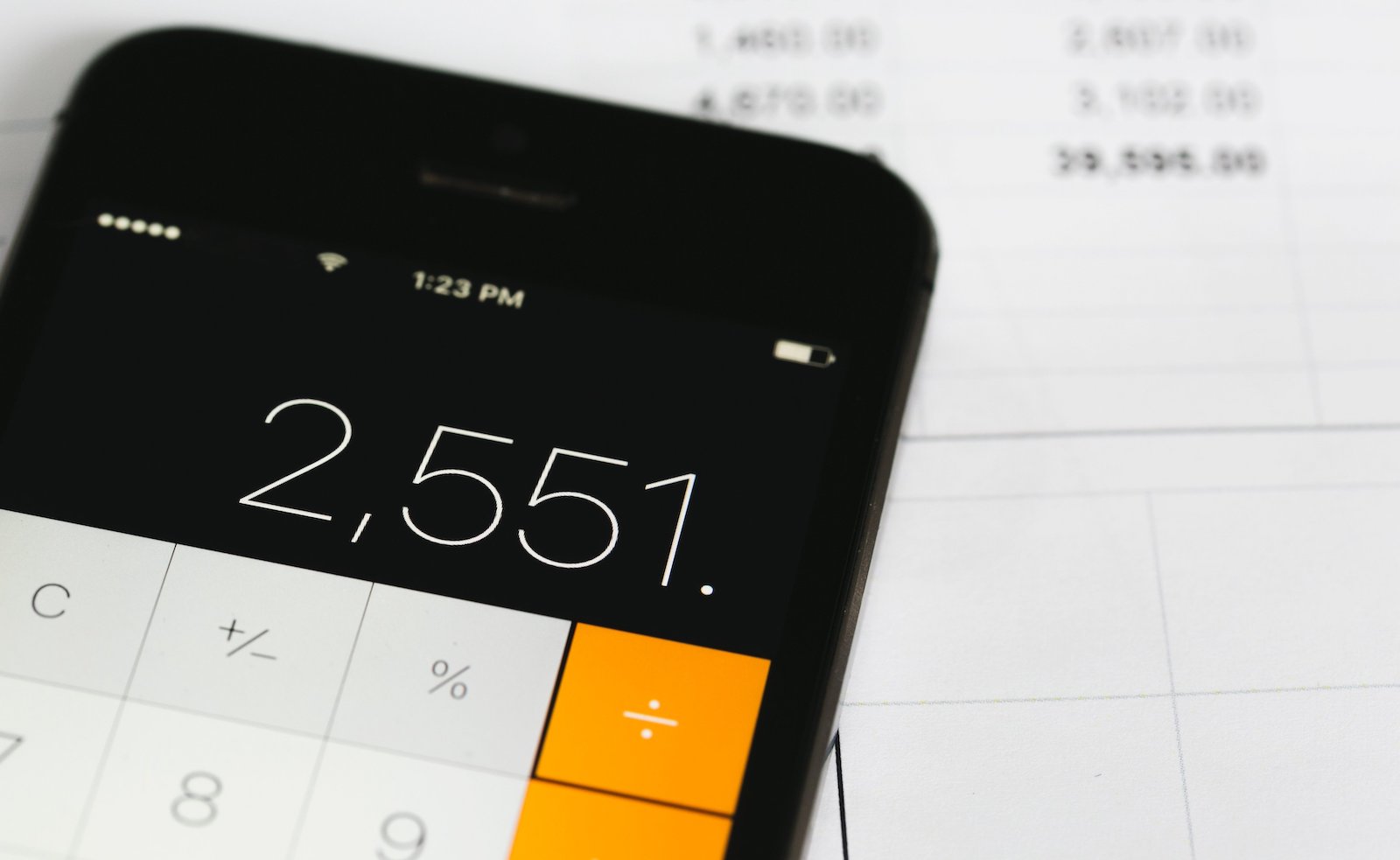Table of Contents
** Minutes
Types of Amazon fulfillment methods
What are common Amazon FBA fees?
FBA is many merchants’ top choice for fulfilling Amazon orders. This is because sellers can leverage Amazon fulfillment centers to store inventory and Amazon is responsible for the pick, pack, and ship steps of the multi channel fulfillment process.
While FBA can help Amazon sellers simplify their ecommerce shipping processes, pricing for this service can be complex, variable, and expensive.
In this article, we’ll break down the logistics costs that make up Amazon FBA. We’ll also share a free tool to help you compare the costs and complexities of fulfilling Amazon orders through FBA vs. outsourcing fulfillment to a third-party logistics (3PL) company for orders on your own website hosted by an ecommerce platform like Shopify.
What is FBA?
FBA is when a merchant ships its products directly to Amazon warehouses across the country for fulfillment. FBA products can sell quicker, but it’s the most expensive order fulfillment option out of the three method. Different fees such as long-term storage fees, warehousing fees, and fulfillment fees add up quickly for FBA sellers.
Other types of Amazon fulfillment methods
If you sell on Amazon, you have three fulfillment methods to choose from.
In the Fulfilled by Amazon (FBA) method, the seller ships inventory to Amazon, and Amazon fulfills orders on the seller’s behalf.
However, there are also two other options:
- Fulfilled by Merchant (FBM): Seller ships their own products directly to the customer after receiving orders from Amazon.
- Seller-Fulfilled Prime (SFP): Seller ships their own products directly to the consumer according to Amazon Prime’s strict shipping standard, allowing them to display the Prime badge on listings they fulfill from their own facilities.
Each of these Amazon shipping options has its own pros, cons, and pricing structures.
Disclaimer: This article and the included calculator are meant to serve as an example of the fees Amazon FBA sellers may encounter. The fees discussed within both FBA and ShipBob will vary depending on several factors, including a seller’s industry, products, seasonality, sales channels, order volume, and more. Rates and types of fees are subject to change.
How much is Amazon FBA?
Amazon FBA costs are dynamic, varying based on seasonality, the type and size of the items being stored and shipped, and a variety of other factors. Here is an example of current Amazon FBA fees (as of 9/22/23). We’ll break down what each of these fees means below.
Amazon FBA Fees table:
| Fee type | Price |
| Monthly inventory storage (per cubic foot) | From $0.56 to $3.34, depending on season, size, and type of item |
| FBA fulfillment fees (per unit) – Standard size | From $3.22 to $4.37+ (cost depends on weight and product type) |
| FBA fulfillment fees (per unit) – Oversize | From $9.73 to $179.28+ (cost depends on size classification and product type) |
| Aged inventory surcharge | $0.50-$6.90+ per cubic foot, depending on the days stored |
| Inventory storage overage fee | $10 per cubic foot monthly |
| Inventory removal and disposal fees | $0.97-$13.05+ per shipment depending on the shipment’s weight |
(Source: Amazon Seller Central)
What are common Amazon FBA fees?
For most businesses, Amazon charges all sellers 15% of the product’s selling price on each product sold, regardless of the ecommerce fulfillment method.
Outside of the seller fee, Amazon FBA charges two main types of fees: fulfillment fees and inventory storage fees.
The FBA fulfillment fee includes the entire picking, packing, and shipping process for each order shipped.
FBA inventory storage fees include storing your products in Amazon fulfillment centers.
Here is what exactly each fee means and why prices for each can vary so wildly.
FBA fulfillment fees
Unlike many fulfillment service pricing models that charge for picking, packing, and shipping as separate line items, FBA Amazon fulfillment fees include every step of the fulfillment process.
The fulfillment fee varies depending on the product size and shipping weight of the item being shipped. There are two main categories of item size: standard size and oversize.
Standard size products are items that weigh less than 20 pounds or have dimensions smaller than 18x14x8 inches.
Oversized shipping includes items that are larger or weigh more than what’s listed above.
Within those categories, there are several additional subcategories.
Both the size and weight of the items being shipped matter because Amazon uses dimensional weight, which takes a shipment’s density into account, to calculate shipping costs.
Fulfillment fees for standard size products can range from $3.22-$4.75 for items under one pound to over $6.10 for items over two pounds, with an additional $0.16 per half-pound for shipments over three pounds.
For oversize products, fees start at $9.73 for small oversize products (over 70 pounds or dimensions greater than 60 inches on the longest side), with an extra $0.42 for every additional pound.
On the other end of the spectrum, fulfillment fees for special oversize products (over 150 pounds or dimensions greater than 108 inches on the longest side) start at $179.28, with an extra $0.83 for every additional pound.
Apparel items have their own FBA fee pricing structure, with fees ranging from $3.43 to $7.17+ depending on the weight of the item.
At the end of the day, your FBA fulfillment fees are going to depend majorly on what exactly you’re selling — there’s no one-size-fits-all fee here.
It’s also worth noting that while packaging is included in FBA fulfillment fees, Amazon will ship your products in Amazon-branded boxes. This means that Amazon’s branding is front and center, which can eclipse any brand experience you intend to create through your shipping.
While this may not be a deal breaker, it’s worth keeping in mind.
FBA storage fees
In order to participate in the FBA program, you’ll have to store at least some of your inventory in Amazon’s fulfillment centers.
Monthly storage fee
Amazon charges a monthly storage fee per cubic foot of space you use to store your products in their facilities.
Monthly storage fees range between $0.56 to $3.34 per cubic foot. The price will vary depending on a few factors:
- Time of year you are storing inventory (October, November, and December are busier months, and storage fees are subsequently higher)
- Physical size of items
- Type of item (if they are dangerous goods, they will be more expensive to store)
Other FBA fees explained
Depending on your business needs, using FBA to fulfill Amazon orders may incur additional fees.
Aged inventory surcharge
For businesses that fail to sell their inventory after 181 days, Amazon will charge a surcharge per cubic foot of storage space that houses that inventory (excluding clothing, shoes, bags, jewelry, and watches).
The fees are as follows:
- Items aged 181-210 days: $0.50/cubic foot
- Items aged 211-240 days: $1.00/cubic foot
- Items aged 241-270 days: $1.50/cubic foot
- Items aged 271-300 days: $3.80/cubic foot
- Items aged 301-330 days: $4.00/cubic foot
- Items aged 331-365 days: $4.20/cubic foot
- Items aged 366+ days: $6.90 per cubic foot or $0.15 per unit, whichever is greater
Inventory storage overage fees
If you exceed your inventory capacity limit in Amazon’s fulfillment centers at any point, Amazon will charge you an inventory storage overage fee.
For each cubic foot that your inventory occupies beyond capacity, you will be charged a fee of $10. These fees will be charged monthly.
Product return fees
If your product is eligible for free returns through Amazon Prime, you will have to pay an additional fee for FBA returns. (Returns processing is covered in the fulfillment fee for products without free returns.)
Inventory removal and disposal fees
If you decide you no longer want to use FBA, it can be costly to remove your inventory from their fulfillment centers. If you choose to have Amazon remove and return your inventory to you, or to dispose of it for you, they’ll charge $0.97-$13.05+ per shipment depending on the shipment’s weight.
Unplanned services fees and penalty fees
Amazon has very strict seller requirements, and they also use fees to penalize sellers for not following their rules (here is an article on avoiding mistakes when selling on amazon).
For example, Amazon will charge a labeling fee to sellers who do not follow their strict barcode label specifications for FBA stock. An unplanned FBA prep fee is charged to sellers who have not prepared products in accordance with the stringent packaging and prep guidelines.
Similarly, Amazon may charge you a manual processing fee between $0.15 and $0.30 if you choose not to provide any information on a shipment’s contents when shipping to amazon.
Package prep fees
Of course, you can always choose to have Amazon prep and package products for you — for an additional fee. Depending on your margins and order volume, this can either prevent hassle for your business or incur unnecessary additional costs.
Note: This is meant to serve as a high-level overview and is by no means comprehensive — there are several additional potential fees that accompany Amazon FBA. See their Seller Central documentation for more information.
“In contrast to working in the Amazon fulfillment dashboard, which looks like a Bloomberg terminal upon opening it, the ShipBob dashboard is awesome and extremely user-friendly.”
Steve Staffan, founder and CEO of Brummell
How to calculate Amazon FBA seller fees
As mentioned above, all Amazon sellers must pay to sell on the marketplace. When you sell something on Amazon through the Professional plan, Amazon’s seller referral fees are 15% of the product’s selling price. For example, if your product sells for $100, Amazon would take a $15 cut of the sale, leaving you with $85 in revenue before other fees.
But as you now know, there’s more to Amazon FBA than selling fees.
Are you leaving money on the table or even losing money by selling and shipping via Amazon FBA?
Whether you’re launching a new product or are a veteran FBA seller, make sure you do the right research and calculations for each product you sell.
This includes taking into account all of the fees mentioned above, plus order revenue, production costs, platform costs, and more.
Because FBA fees are so variable, if you don’t stay on top of how much you’re paying Amazon, you may find that your profits are lower than expected, or even that you’re barely breaking even.
That’s why it’s important to calculate your total FBA costs, so that you know exactly how much you’re spending on Amazon FBA – and whether it’s worth it.
Below are a few tips for calculating your Amazon FBA costs.
1. Consider your product and order details
To calculate your Amazon FBA costs, you’ll first need to gather the following data points for your business:
- Number of orders per month
- Average number of items per order
- Average sale price per item
- Average production cost per item
- Average weight and dimensions per item
The weight and dimensions information will help you compute your fulfillment and storage fees, while information on your orders, pricing and production cost will help you calculate margins, profitability, and seller fees.
2. Include the cost of your seller plan
Don’t forget to factor all costs into your Amazon FBA total – including the cost of simply selling on Amazon.
There are two plans for Amazon sellers to choose from based on monthly order volume: the Individual plan and the Professional plan.
The Individual plan is for merchants selling fewer than 40 items per month, and involves:
- No monthly seller fee
- $0.99 fee for each item sold
- Variable post-sale fees depending on category
The Professional plan is for merchants selling over 40 items per month, and includes:
- Monthly subscription fee of $39.99
- Referral fee for each item sold (typically 15% of product’s selling price)
- Variable post-sales fees based on shipping details
3. Review your monthly cost and profit breakdowns
If you already use Amazon FBA, make sure to review your monthly bills. Small fees can add up quickly, and often without a merchant realizing it – so try to parse every cost, charge, and fee as individual line items, rather than grouping costs together. That way, you can identify your biggest spending areas, and determine whether Amazon FBA is the most profitable and cost-effective fulfillment option for your brand.
[Read more: Order Fulfillment Costs and 3PL Pricing Models: Everything You Need to Know]
4. Request pricing from an FBA alternative
If your FBA fees are looking expensive, you might want to shop around and find better alternatives to FBA. For example, ShipBob offers DTC and B2B fulfillment solutions that can increase sales on your ecommerce website and help you achieve affordable 2-day shipping.
ShipBob offers Fulfillment by Merchant (FBM) and if you utilize Amazon fulfillment today, we highly recommend diversifying your fulfillment options (e.g., use both FBA and FBM) to maximize sales. Learn why sellers have moved off of Amazon to ShipBob for FBM here.
Hit the ground running with ShipBob for Amazon FBM
ShipBob’s Amazon fulfillment services let you trade complicated fee structures for a more simple, streamlined fulfillment experience. In addition to having your DTC and B2B orders picked, packed, and shipped by our team of experts, your brand can also leverage other benefits with ShipBob, including:
Returns management
ShipBob will handle restocking, quarantining, or disposing of returned products for you. Simply choose your preference for each SKU, and our team will take care of the rest, while you can track each return on the ShipBob dashboard.
ShipBob also integrates directly with top returns platforms like AfterShip, Loop Returns, and Happy Returns, so that you can handle returns how you want.
Distributed inventory
With over 50 fulfillment centers world wide and dozens across the US, ShipBob’s fulfillment network enables brands to store inventory closer to major customer hubs, minimizing shipping costs and transit times. That way, your business can achieve affordable 2-day shipping anywhere in the continental US, while still managing all your inventory from one centralized dashboard.
ShipBob’s Ideal Inventory Distribution Calculator even lets you find the most strategic allocation plan to optimize for shipping costs.
Free packing supplies
ShipBob provides standard, non-branded packaging materials for free on all orders. This includes standard boxes, bubble mailers, poly mailers, poster tubes, and book folds with no logos at no extra cost to you.
Branded packaging
Alternatively, ShipBob can also use your business’s custom, branded packaging (including branded boxes, dunnage, and tape) to impress customers and create an unforgettable unboxing experience.
In addition, ShipBob makes it easy to include personalized touches such as gift notes and marketing inserts in orders, so that you can stand out from the competition.
“Most other companies like Amazon are structured in such a way that you don’t have flexibility — you’re just a small part of their business, so there’s no patience for you.
The amazing thing about ShipBob has not just been its flexibility and ability to customize, but also the support it’s given us whenever we’ve faced problems. Having support through ShipBob has really allowed us to capture growth well.”
Aaron Patterson, COO of The Adventure Challenge
Shipping fee discounts
ShipBob negotiates bulk discounts with major carriers on your behalf, so your brand can save when shipping with carriers like UPS, USPS, FedEx, DHL, and more.
If you like what you see and you’re interested in learning more about ShipBob as a fulfillment provider, you can request a free quote from ShipBob. Get familiar with the platform and services that can help your business save money on fulfillment.
Amazon FBA FAQs
If you’re still confused by the pricing above, you’re not alone. Here are some of the most commonly asked questions about Amazon FBA fees.
Is there a monthly fee for Amazon FBA?
The only FBA fee charged monthly is the inventory’s monthly storage fee. There is no additional monthly fee for using FBA.
How much is the Amazon seller fee?
All Amazon sellers must pay to sell on the marketplace. There are two plans for Amazon sellers to choose from based on monthly order volume: the Individual plan, at $0.99 per item sold, and the Professional plan, at $39.99 per month.
1. Individual (selling fewer than 40 items per month):
- No monthly seller fee
- $0.99 fee for each item sold
- Variable post-sale fees depending on category
2. Professional (selling over 40 items per month):
- Monthly subscription fee of $39.99
- Referral fee for each item sold (typically 15% of product’s selling price)
- Variable post-sales fees based on shipping details
How do I start an Amazon FBA business?
Before you choose Amazon as a sales channel and FBA as a fulfillment method, take a step back and look at your ecommerce strategy as a whole. What products will you sell? What brand experience do you want to create?
The FBA fulfillment model is not for everyone — while it can maintain healthy margins for some businesses, it may not make sense for others.
To get started, check out this Ecommerce Store Launch Checklist for a step-by-step guide to getting started selling online.
How does Amazon FBA work?
Sellers using FBA sell their products on Amazon’s marketplace and store their inventory in Amazon’s fulfillment centers. FBA sellers pay Amazon for inventory storage space.
The order is then picked, packed, and shipped to the customer by Amazon in an Amazon-branded box or poly mailer, and the seller is charged a predetermined fulfillment fee.
Why should I choose FBM over FBA?
While Amazon FBA may include multiple different fees for sellers, FBM enables a brand to enjoy the perks of selling on Amazon without worrying about surcharges. Depending on your fulfillment solution, the total cost of FBM may even be less than the cost of doing FBA.
FBM can also provide merchants with more control over their shipments. For example, FMB merchants can ship orders in their own branded boxes, as opposed to Amazon-branded ones, to curate a memorable and marketed unboxing.



